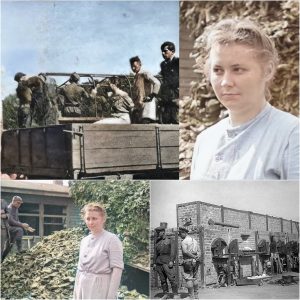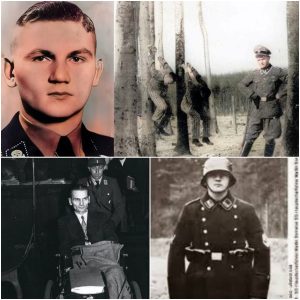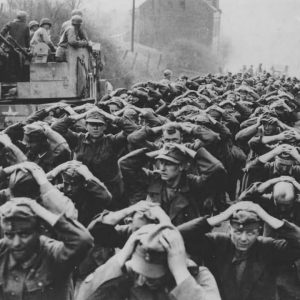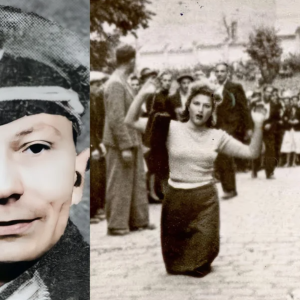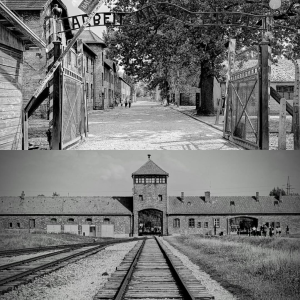Rubble women in the heart of destruction – Germany’s reconstruction begins amidst ruins and hope

World War II not only left deep wounds in people’s hearts, but also transformed entire cities into landscapes of rubble. The scene depicted in the image shows one of these countless destroyed places in postwar Germany – possibly Berlin, Dresden, or Warsaw – a place where hope and despair existed side by side.

The image focuses on women – so-called “rubble women” – sorting bricks and debris with their bare hands, shovels, and simple tools. They symbolize a new beginning, the tireless striving for reconstruction despite the horrors they have left behind. Behind them rise the remains of a once magnificent building, now just an empty shell with open wounds. The tower, with its shattered facade, stands like a silent witness to the past – majestic yet broken.
After 1945, many cities lacked men – killed in the war, missing, or prisoners of war. Women took on the arduous task of rebuilding their cities from the ruins. Many had never before been subjected to physical labor, but necessity and the will to survive drove them on. They formed chains, passed stones to one another, and cleared rubble – brick by brick. It was not only a physical reconstruction, but also an emotional one: with every stone removed, a piece of pain was processed, a piece of the future was created.
In the background, carts filled with sorted stones can be seen – usable for new houses, new schools, new hope. This scene may have seemed commonplace, yet in its quiet drama it speaks of strength, resilience, and the indomitable will of the people to rebuild what has been destroyed. It is an image that doesn’t shout, but speaks softly – with a penetrating clarity.
Interestingly, the term “Trümmerfrauen” (rubble women) only became a symbol years later. Back then, they were simply women, mothers, widows, sisters – many of them traumatized themselves, yet forced to carry on. Often overlooked, sometimes ridiculed, rarely acknowledged – today they have become part of Germany’s collective memory. Without their work, reconstruction would have taken decades longer.

This snapshot encapsulates thousands of stories. Perhaps one of these women lost a son in the war. Perhaps another spent her childhood in the attic of the half-destroyed house. Perhaps this is the place where a café once stood, where they danced and laughed – before the bombs fell. The photograph is more than just documentation. It is a memory, a memorial, a warning.
Rebuilding the cities was not only a physical challenge, but also a moral and cultural one. How could a new Germany be built after all the suffering and guilt? With what values, with what memory? The women who cleared the rubble didn’t respond with grand political speeches, but with actions: They laid the foundation – literally – for what we know today as modern Germany.
The camera has the perfect M


